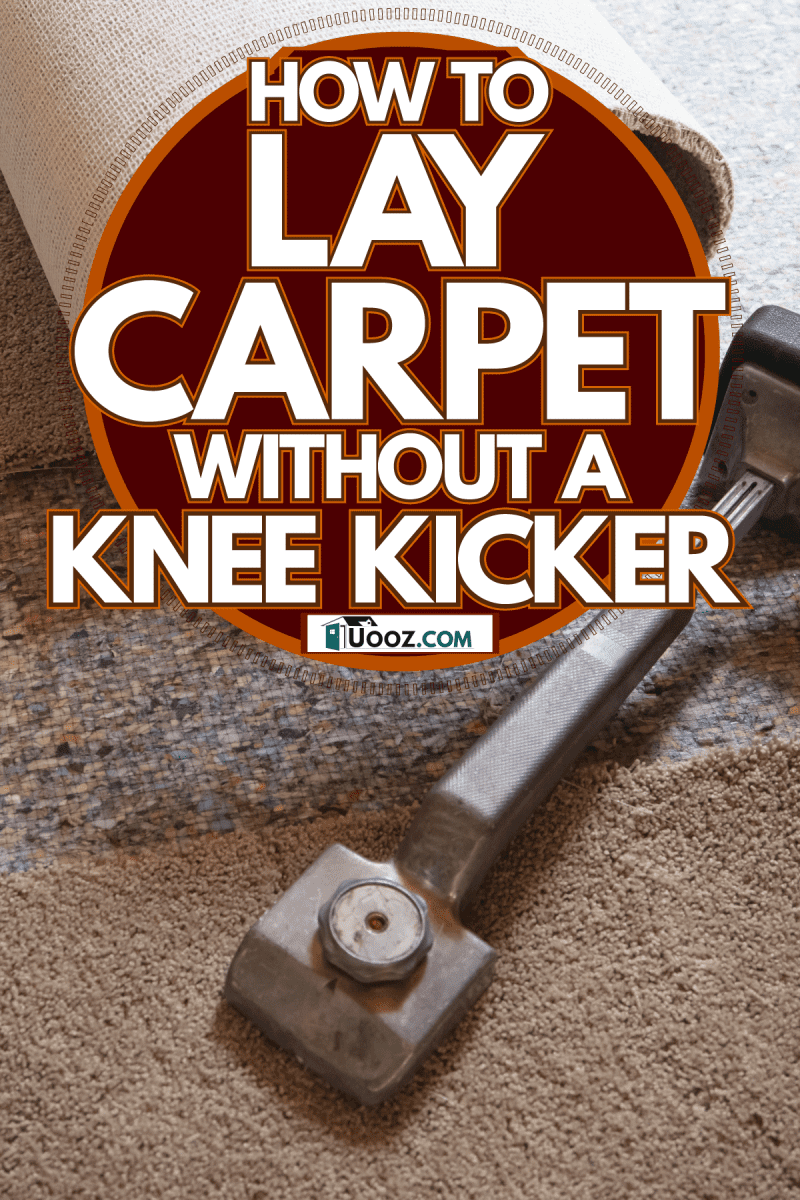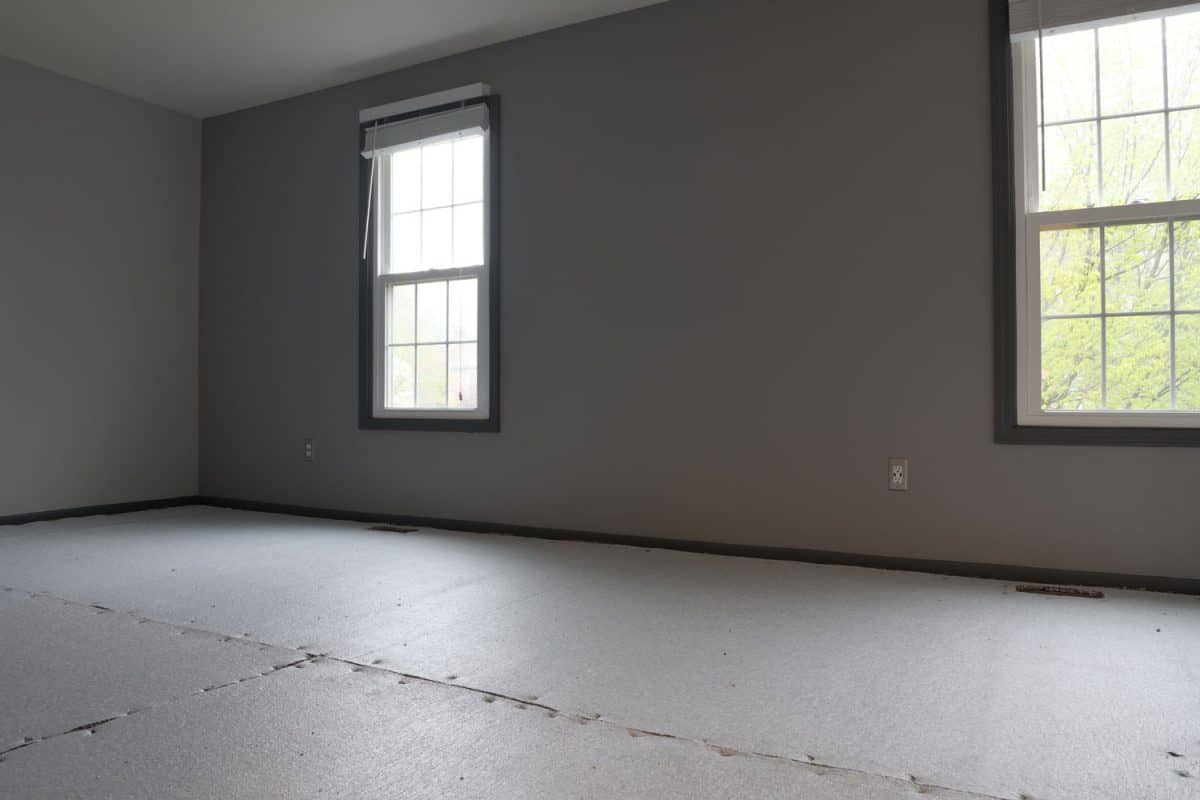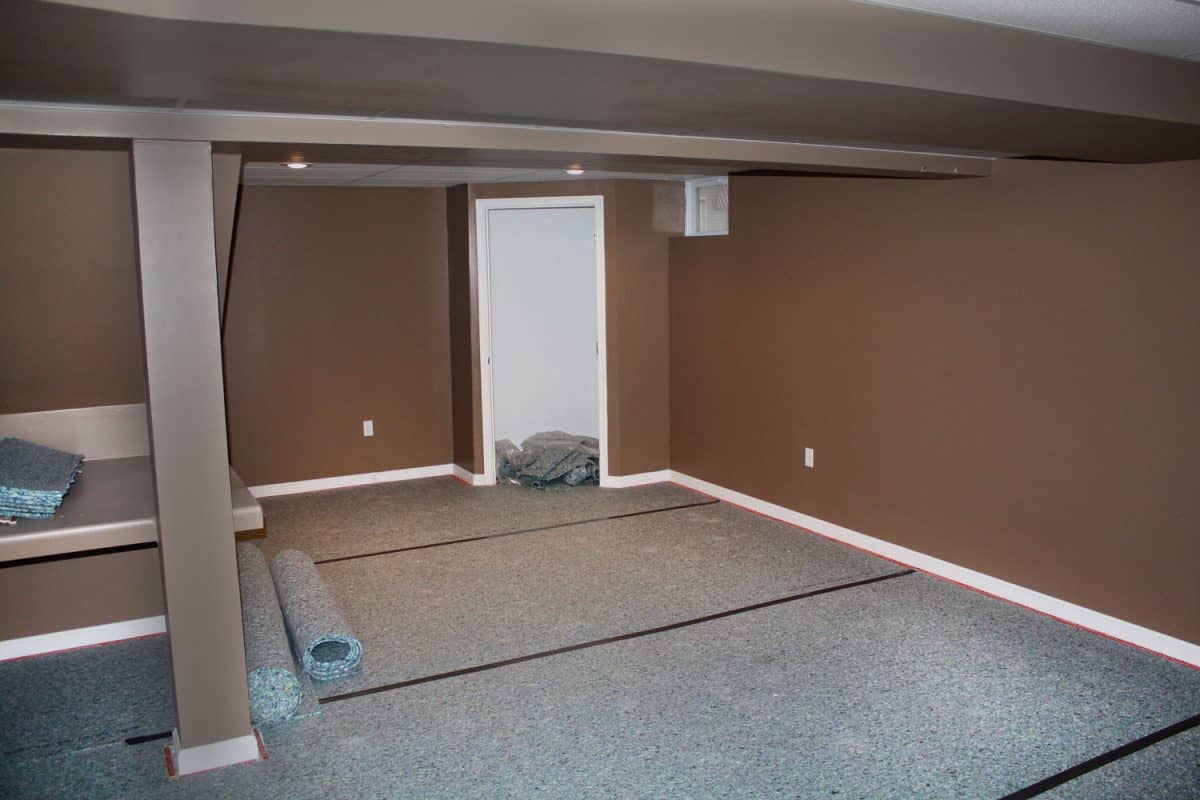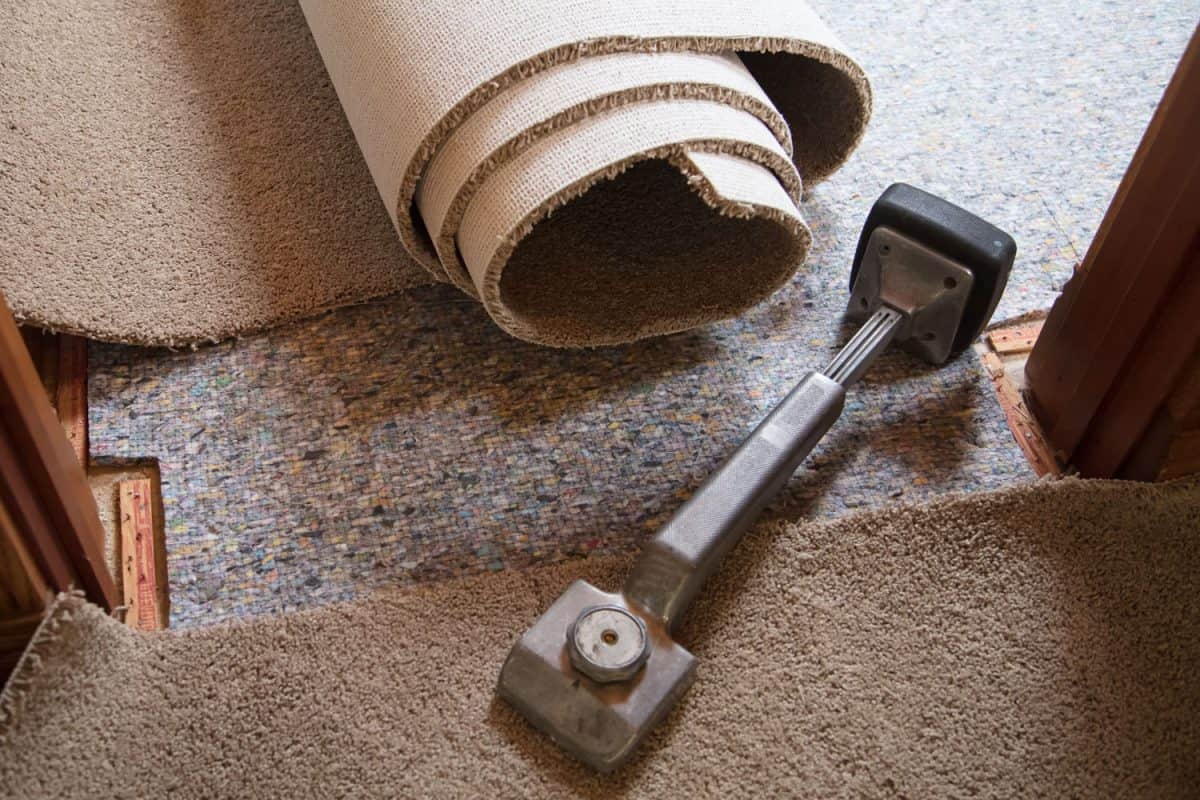Knee kickers are used to install carpeting quickly and without much effort. So you'll find that every professional carpenter will use one. However, if you're a DIYer and wondering how to install your carpet without one, you've come to the right place. We have researched an effective method you can use to lay carpet in without a knee kicker. And in this post will go over it.
Here are the steps to lay carpeting without using a knee kicker:
- Set up the tack strips
- Prepare and lay the padding
- Install the carpeting
- Lay the carpeting on top of the tack strips
Using a knee kicker makes carpet installation go quicker and easier. However, a carpet can be installed without one, though it will require a different method. Continue reading to learn what to do if you don't have a knee kicker for your installation.

Steps To Lay Carpet Without A Knee Kicker
Creating tension when laying carpet is essential to the lifespan of the carpet. Not only does stretching improve the carpet's lifespan, but it also reduces the chances of it becoming a slipping and falling hazard.

Things you'll need:
- Tack strips
- Carpet shears
- Utility knife
- Measuring tape
- Knee pads
- Carpet roller
- Carpet
- Carpet padding
1. Set up the tack strips
First, put on your knee pads-your knees will thank you. Then check the subfloor to ensure that it's not worn or damaged in any way. If so, repair any damaged areas by replacing or repairing the planks.
Next, install the attack strips around the perimeter of the room. Be sure to install them right next to each other and right up against the wall [since you're not stretching the carpet].
Find these knee pads on Amazon.
2. Prepare and lay the padding
Next, take your carpet padding and use your utility knife to cut it to the same square footage of the room. Be sure to ]use the square footage minus the space that the tack strips will need [about 1 inch).
Once you've cut the carpet padding to the same dimensions of the floor, lay it against the wall farthest from the door.
When laying the padding, be sure not to lay it completely over the tack strips, just up against the front of them. If needed, apply carpet adhesive or staples to the edge of the padding to secure it.
Roll the padding out until it reaches the other side of the room. Manually remove any peaks from the padding so that the carpet lays flat on top of it.
3. Install the carpeting
Next, use your carpet cutting tool to cut the carpet to the same square footage as the floor. Or, if the carpet has been pre-cut by the store, simply skip this step. Again, starting from the wall the furthest away from the door, place the edge of the carpet down and roll it back to the other side of the room.
After the entire carpet has been laid to go back to the other side and take a quick jump forward about 1 1/2-feet toward the tack strip. This will allow you to manually stretch the carpet without using a knee kicker and will make it easier for the carpet to reach the tack strip.
Do it one or two times until the carpet reaches the strip. Repeat this step for each tack strip. Make sure that you have on shoes with a rubber bottom, to avoid slipping on the carpet.
Find these rubber shoes on Amazon.
4. Lay the carpeting on top of the tack strips
Next, don a pair of handyman gloves, then go to each tack strip, pulling the edge of the carpet over them individually. Be sure to hook the edges over both rows of spikes on the tack strips.
It's best to keep your utility knife handy. This way, you can easily cut away any carpet edges that are going beyond the tack strips for the wall.
Read more details about these handyman gloves on Amazon.
After installing all the edges of the tack strips, walk around the room to do a thorough inspection of each row. Make sure the carpet is not overlapping the tack strip and touching the wall, and that it's securely placed on each one. This will prevent you from having to repair peaks in the carpet later on.
What is needed to lay carpet?

Common carpet laying supplies include a knee kicker, seaming tape, carpet roller, utility knife, and strips. It's also helpful to have a set of knee pads to make the installation process more comfortable.
Can I lay carpet without underlay?
Yes. You can lay carpet without an underlay or padding. However, there are several downsides to doing so.
The carpet will be less comfortable
Walking on a carpet that doesn't have padding beneath it will be less comfortable. This is the case if the subfloor is made of concrete. Carpet padding absorbs shock, making it more comfortable to walk on carpeting for an extended time without foot or back pain.
Carpet cleaning will be more difficult
Carpet padding also makes carpet cleaning much easier by absorbing stains and smells. The great thing about padding is that you can replace it once it becomes dirty, unlike a subfloor.
Vacuuming and steam cleaning a carpet that has no padding beneath it will be more difficult, as the suction will not be as strong due to the harder, solid surface. It's better if the carpet has enough airflow to breathe, so that dirt and debris don't become trapped beneath it.
The carpet won't have insulation
Another ancillary benefit of carpet padding is that it provides effective floor insulation. Without padding, any drafts and cold air can easily seep up from the room below and penetrate the room where the carpet lays. This means more difficult temperature regulation in the hot and cold seasons.
The floor will have fewer soundproofing capabilities
Floors that have no carpet padding will transmit more sounds from the space beneath them. For example, if you have an entertainment system in the basement below, you'll find that the sounds will more easily travel upstairs to the room above when there is no padding to help absorb them.
The carpet will become worn out faster
Not only does padding make carpeting more comfortable, but it also extends its life span. The thick rubber material helps protect the binding and backing of the carpet from everyday foot traffic that causes friction on these areas.
Can you fit carpet yourself?
Fitting carpet properly means taking good measurements, knowing how to seam edges together, and laying them over tack strips correctly. The great thing about having professional installers lay your carpet is that they typically have warranties on their projects.
This gives you peace of mind after the installation is completed, and you don't have to worry about common issues that can occur afterward, such as peaking or immediate fraying.
How much does it cost to install carpet yourself?

The cost to install carpet will depend on the type of carpet that you choose. Your average carpet roll can range from $2 to $8 per square foot--though some can go as high as $18 or more.
Can you lay carpet over existing carpet?
Professional carpenters will strongly recommend against this. Installing carpeting over existing carpeting will not only create an inadequate base for the new carpet, but it can cause it to wear out more quickly than it would otherwise.
It can also make it easier for the carpet to harbor odors and mildew. Many homeowners consider this option when the previous carpet has been glued down--a practice that makes carpeting notoriously difficult and laborious to remove.
However, this isn't always the case. It's best to first test a corner of the carpeting to determine how hard it will be to remove. And if all else fails, hiring contractors to remove it for you will be well worth every penny.
Doing so will prevent you from having to replace the new carpet sooner, and it will make it easier for you to do a thorough cleaning and maintenance.
Wrapping Things Up

As you can see, you can install a carpet without a knee kicker by stretching the carpet manually using your body weight. This method should be used cautiously, and you should wear rubber shoes to prevent slipping and falling during the process.
Before you go, be sure to check out our other posts:
What Carpet Deodorizers Are Safe For Pets? [6 Best Options]
Carpet Smells Of Urine After Cleaning? Here’s Why



